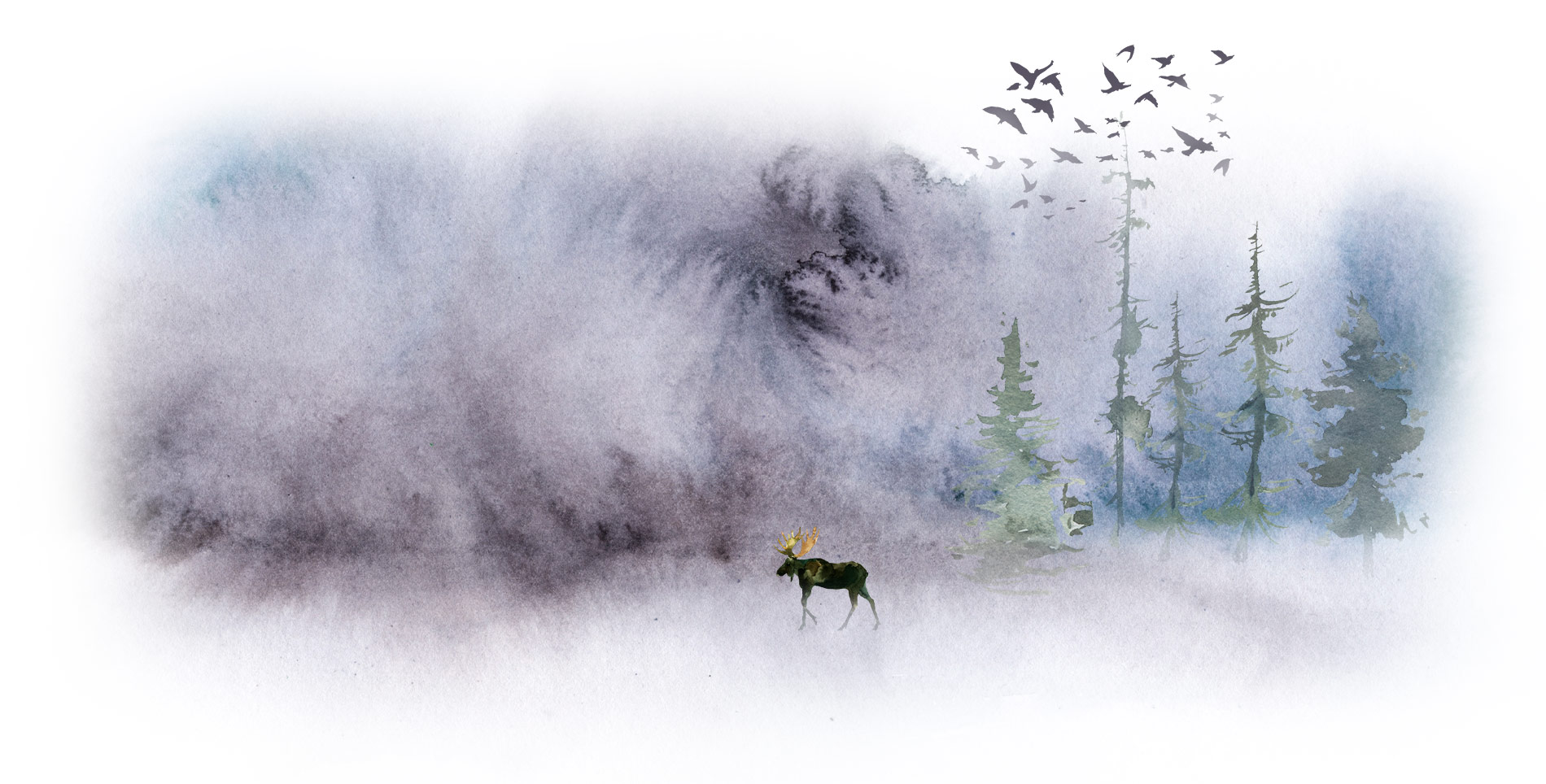
The Challenges of Serving Indigenous Cuisine in Alaska
The absence of Indigenous restaurants is a result of food scarcity, unique laws, and the protecting of tradition.
Editor’s Note: This story is published in The Industry Issue of Life & Thyme Post, our exclusive newspaper for Life & Thyme members. Get your copy.
Whatever you’re craving, you’ll likely find it in Alaska’s most populous city. Anchorage is one of the most diverse communities in the nation, with first- and second-generation immigrants from around the world setting up shop. From strip-mall joints like the Queen of Sheba Ethiopia Restaurant, to mini empires like the many Pho Lena, these newcomers have left an indelible mark on the city.
However, you would be hard-pressed to find any dishes from the population that was here first: Alaska Natives.
While there are restaurants in the continental U.S. that serve Native American cuisine—notably places like Indian Pueblo Kitchen in Albuquerque, New Mexico, The Sioux Chef in Minneapolis, Minnesota, and Mitsitam Native Foods Café in the National Museum of the American Indian in Washington, D.C.—it seems there aren’t many, or any, Indigenous-focused restaurants in Anchorage, or any other city in Alaska for that matter.
Considering roughly a quarter of Alaska’s population is Indigenous, why aren’t they better represented in the restaurant scene?
Dinner Plate Obstacles
When Rob Kinneen, a chef with Tlingit heritage, was working in Alaska (he is now based in North Carolina), introducing people to Indigenous foodstuffs was a passion of his. He promoted the cuisine he grew up on, like salmon with foraged, wild ingredients, during guest chef appearances, in-person and virtual cooking demos, speaking engagements, and private catering events—including a five-course dinner served to President Barack Obama in 2015.
Even though it was something he was very passionate and knowledgeable about, it wasn’t easy. There are numerous hurdles getting Indigenous foods in front of other people.
One obstacle in serving traditional foods on a commercial scale is the issue of Alaskan food security. There’s a short growing season in Alaska; for much of the year, it’s too cold to harvest. And climate change has altered many of the traditional hunting and gathering grounds. In some cases, the melting permafrost has made it too challenging to get to areas tribes have hunted in before. In other cases, the rising temperatures have changed what grows in certain areas, which affects the people and the animals they hunt. Today, more than 90% of all food consumed in Alaska is brought into the state by barge.
“Until there’s more food security up here, I don’t see how a restaurant could rely on that sort of model,” Kinneen says.
Similarly, there is a bounty of foods that are impossible to be USDA-certified, such as moose, musk ox or bear.
The United States has particular rules about the use of wild game in a restaurant setting. Whereas other countries can certify meat (like rabbit) after it’s been harvested, in the United States, all meat sources need to be certified pre-mortem for government food safety reasons. It’s not exactly possible to wrangle a wild moose and have it checked out by a government official prior to slaughter. And these aren’t herd or easily domesticated animals, so you’d never see a moose farm like you would see farms in the Lower 48 containing elk, antelope, or other uncommon proteins.
Given those challenges, when Kinneen was working as a chef, largely in fine dining in Anchorage, he sought to use what local ingredients, like salmon and reindeer, he could. Still, given the limited ability to get traditional foods, his recipes were often a far cry from the ones that were handed down to him by his Elders.
“I don’t know what it would take to get a truly Indigenous restaurant in Alaska. It would probably require a lot of connections with tribal entities to make that happen,” Kinneen says, adding that true Indigenous cooking doesn’t happen in Alaska’s restaurants, but rather, in homes.
Familiar Foods
There is one place in Alaska, outside of homes, where it seems possible to get traditional foods: healthcare settings, such as hospitals.
Amy Foote, Executive Chef at Alaska Native Medical Center in Anchorage (the only hospital that routinely serves traditional foods), often whips up velvety fish head soup, salty smoked hooligan, reindeer meatloaf, moose stew, and other delicacies, providing comfort to those in her care. While Foote isn’t Indigenous herself, much of her team is.
Again, however, being able to serve those foods wasn’t easy. The only reason it is actually possible is through government appeals and donations.
Up until 2014, federal law prohibited the use of foraged foods in a healthcare setting due to concerns of cross-contamination and foodborne illnesses. The former Alaska Senator Mark Begich, along with Alaska Native physician Dr. Ted Mala lobbied the government to allow traditional foods to be served as inpatient meals. The belief in its necessity is simple: patients need foods familiar to them in order to heal.
Many of the patients at ANMC come in from villages so remote there are no grocery stores where they live. They rely on the store outside their door—what they can hunt, fish, gather and grow. Typical hospital fare, like Jell-O cups and chicken noodle soup, would seem unfamiliar to them. Having access to what these particular Indigenous patients know is critical.
However, it’s not actually legal to sell or purchase most traditional foods in Alaska. Because it’s such a key part of the Alaska Native diet, there are laws in place to prevent people from commercializing a basic food source. If those foods were open to unregulated harvest, it could mean many Alaska Native households would have to go without.
“Unless there was a way to sustainably harvest, it would probably mean there wouldn’t be enough to go around,” Foote says. “It’s a battle we see with the fisheries. Alaska Native peoples don’t always get the fish they need and there’s controversy over commercial fishing—is it wise, is it overfished?”
Similarly, if someone decided they were going to start an Alaska wild blueberry business, there’s a risk they’d take too much and impact the wildlife and people in the area. In Alaska Native culture, it’s important that you only take what you need; if you end up with extra, custom dictates you donate it to an Elder or someone in need.
“It’s about how do we live within a community?” Foote says. “If you have it, do you sell it, do you share it, do you barter with it? Selling food isn’t what was ever done culturally. It was meant to be shared and traded and honored and appreciated and ethically harvested and thanked.”
And even more challenging, there are numerous traditional foods that are illegal to sell, like whale. Certain laws (like the U.S. Whaling Convention Act and the International Convention for the Regulation of Whaling) prohibit everyone but Indigenous peoples from hunting whale. However, there are still strict laws on how many attempts may be made in a year and who within an Indigenous community can hunt whale.
“As Indigenous people, we had to fight to have the right to continue to use whale [in general],” Kinneen explains, adding that although bowhead whales are an endangered species, Alaska Natives were granted the right to harvest a certain number per year, as it’s an ingredient they have used for millennia. “Berries are one thing, but whales are something that’s pretty sacred. It’s not something you’re going to sell on any kind of market.” Those same rules mean Foote can’t sell these foods in the hospital cafeteria—it can only be given directly to the hospital’s patients, people who have likely had it before.
For Foote to get these ingredients and others, she needs to rely on the donations of an altruistic network of Indigenous hunters and gatherers from around the state. When the hospital puts out a call asking for donations, it usually does fairly well—Alaska Native culture puts much emphasis on taking care of Elders, which many of the patients are. If people didn’t gift her the ingredients, she wouldn’t be able to do what she does.
What It Would Take
While numerous restaurants throughout the state incorporate ingredients common in the traditional diet of Alaska’s Indigenous peoples—like salmon, clams and seaweed—or use Alaska-grown food when they can, the recipes are more modern.
“You can buy salmon and other types of fish on menus all over Alaska, but those won’t necessarily be prepared in an Indigenous way,” Foote says.
Part of it, Kinneen says, is that not as many Alaska Natives know how to prepare traditional foods as they did a few generations ago. Often, recipes are taught from one generation to the next, but now that there’s the convenience of ready-made foods, the traditions are being lost.
“I would love to see an Alaska Native culinary program that focuses on the traditional Alaska Native dishes so it doesn’t get lost,” Foote says. “That’s the risk we’re facing right now.”
Kinneen is happy to play the teacher role, as he thinks it’s important people understand what it means to be Indigenous. He’s used his platform to educate before, but not without pushback from some in his community who opposed him sharing their culture in such a public venue. The traditional ways of harvesting and preserving are held very close and sacred.
“From a spiritual standpoint, having someone share their tradition and history through food is a really personal experience,” Foote says. “Maybe the limitations in the ability to do it properly are why you don’t see it happening in the mainstream in Alaska.”
Kinneen echoes this sentiment, saying, “There’s always the question of: How can we do this in a way that’s honorable?”






Our comments section is for members only.
Join today to gain exclusive access.